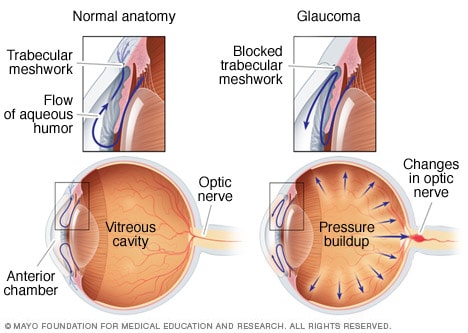- Published on
What Is Glaucoma?
- Authors
- Name
- Jake Konigsberg
- Role
- Founder
A group of life-long eye diseases which occur when the nerve that connects the eye to the brain is damaged (AKA the optic nerve). Such a disease is often caused when the body fails to maintain a balance between internal fluid that is produced by the eye and the amount that drains away. When too much fluid builds up behind the eye, there is a buildup of pressure in the eye causing damage to the optic nerve leading to glaucoma.
Glaucoma has many risk factors. For one, it is thought to be genetic with many cases running through families with genes that result in higher eye pressure or damage to the optic nerve. Other risk factors make glaucoma more common. For example, being over the age of 60, having had an eye injury, and being extremely nearsighted or farsighted are simple factors that increase one's risk of developing glaucoma.
Glaucoma is a group of diseases with the most common form being open-angle glaucoma. 90% of people in the U.S. who have glaucoma have an open-angle glaucoma. An open-angle glaucoma is when the area that the iris meets the cornea where eye fluid is drained works properly, but there is either too much fluid produced, a clog, or other problem deeper in the drainage system. When any of these problems occur, there is a buildup of eye fluid raising the pressure in the eye.
